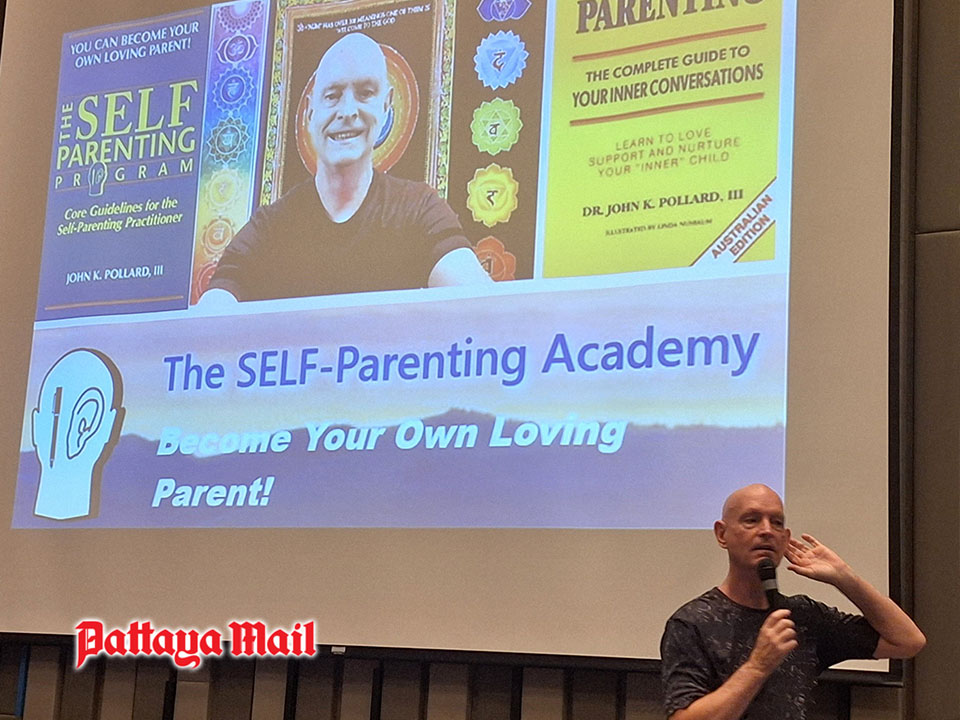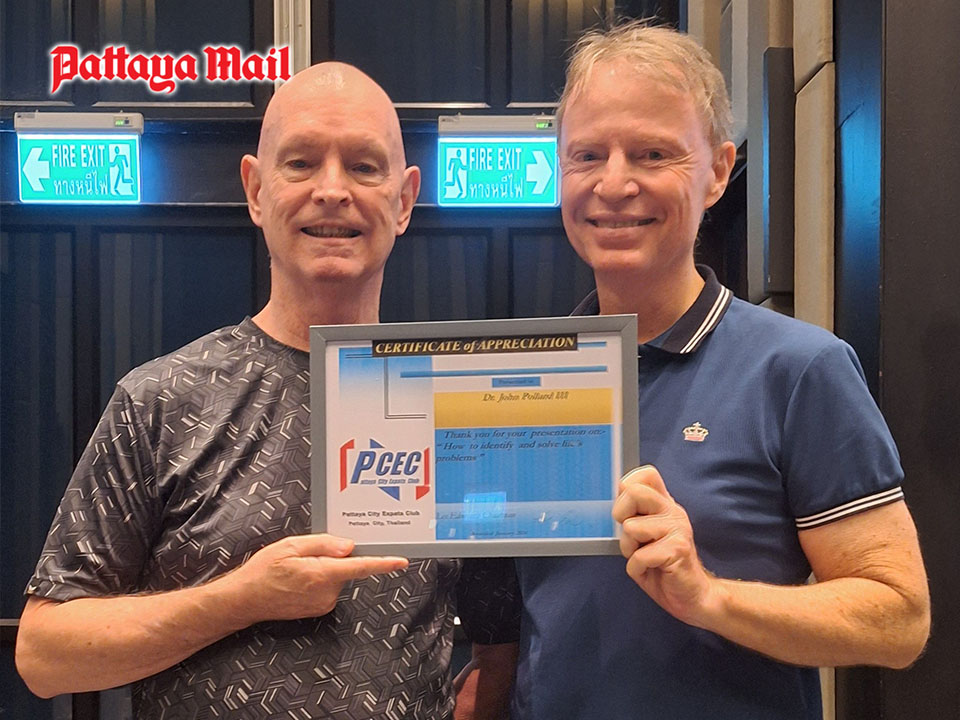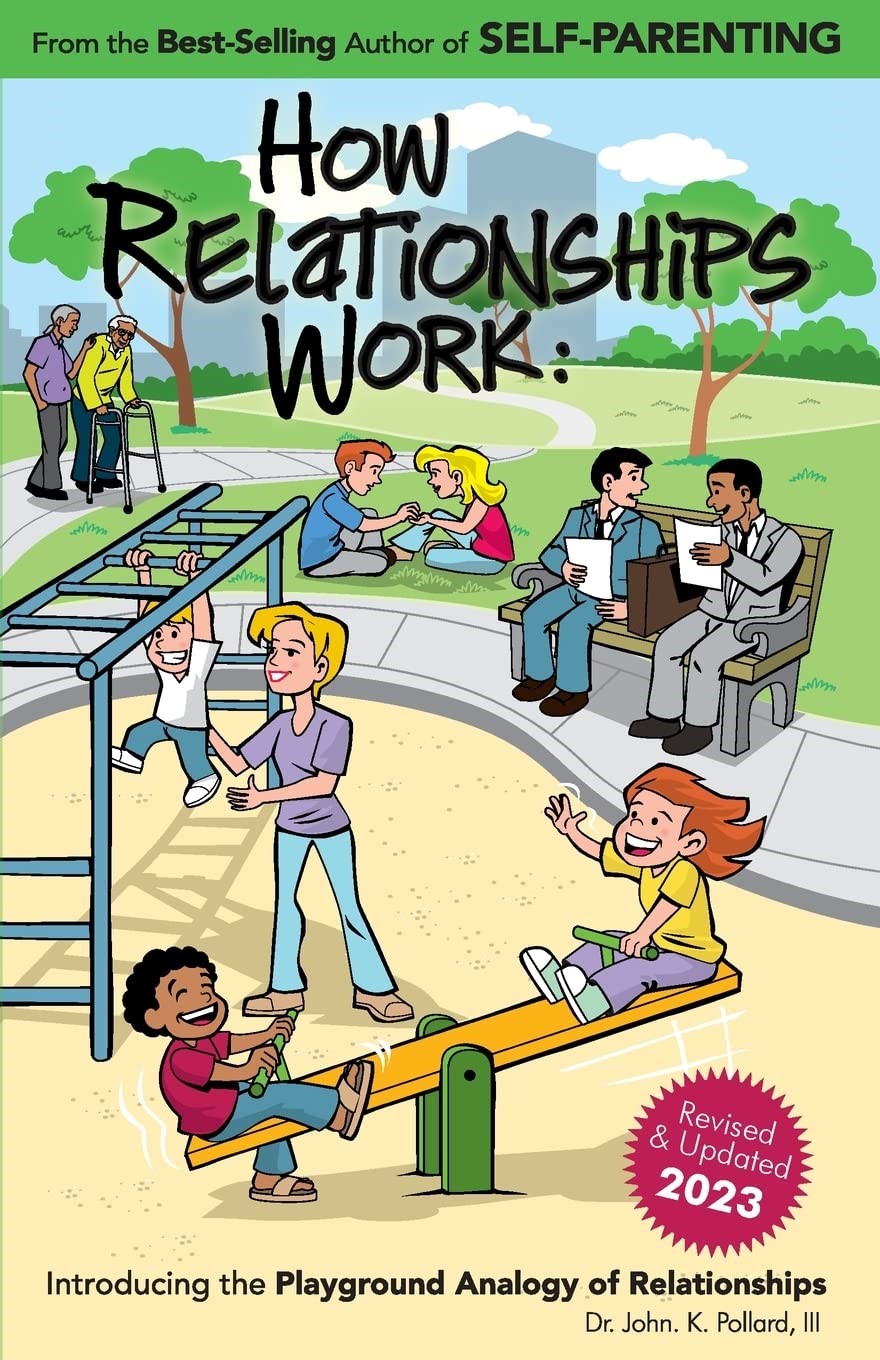
PATTAYA, Thailand – We all have problems in life, but often do not realize how to solve them. The speaker at the Pattaya City Expats Club (PCEC) on Wednesday, January 17, provided an approach to do just that. Dr. John Pollard III, DC, spoke on the topic “How to Identify and Solve Life Problems.”
Dr. John is a lifelong student and educator whose professional life defines the term holistic healer. Throughout his career, he’s helped a variety of individuals with complex Body, Mind, and Relationship problems by means of the innovative system he originated, called Generic Human Studies. He also is the author of several books. He referenced two in particular during his talk noting that more information on his approach to solving life’s problems can be found there – “SELF-Parenting” and “How Relationships Work: Introducing the Playground Analogy of Relationships” (both can be found on Amazon.com). He also referenced his website: https://selfparenting.com/resolving-inner-conflicts/.

He noted that the reality is that most problems you encounter already have known solutions, some of which become apparent once you understand how to identify and solve a problem. To do this, first you need to define and locate its source. Only then can you strategize and apply your solution. He began by asking his audience what are the components of a computer problem, which he then confirmed were hardware, software, or network. He then equated these to also being the components of a human problem – hardware being physical, software being relationship, and network being connectivity. He then cited several examples of each type.
Dr John then described a primary factor to consider is the inner system which consists of “child” and “parent” which are developed in early childhood. Each of these is a “voice” in your head. When there is a conflict/problem, you need to identify which voice is speaking. He is the creator of the psychological system called SELF-Parenting which became known in the psychology profession as “inner child work” during the late 80s. He then brought out several factors from this previous work giving emphasis to the need to hear and understand the inner conversations within our minds.

Because you have two different personalities inside your head, your Inner Parent and Inner Child, they often have differing needs and perspectives which can result in direct conflict. This can take several forms but basically the result is an inner conflict which results in unhappiness. The most important aspect of resolving an “Inner Conflict” is recognizing that you are having one in the first place. These conflicts begin with physical, emotional, and mental signals. Something is going wrong. You don’t feel normal.
Once you recognize these symptoms and realize there might be an Inner Conflict in the making, start writing out what you hear in your head. To resolve the conflict, you must get it “out of your head” and “onto the page.” It’s not important to know which side is which. As you write what you hear inside your mind you will notice the “one part of me wants something and another part of me wants something else” phenomena. To illustrate, he gave several examples. He said you should list the specific needs of each Inner Self.
The goal being to list the needs of both selves in separate columns and reading through it, you should be able to differentiate the voice of each self. Once you know which side is which use another sheet to write out what each self wants. He then offered the methods to analyze these wants with the objective to arrive at a “win win” solution where both sides will get what they want.

At this point, Dr John brought out another important factor in finding a solution to a problem and that is to know and understand how relationships work. Using a “see saw” analogy, he then described the various aspects involving relationships. He said he would summarize these aspects from his book, “How Relationships Work” which used this analogy as an explanation of how each of the 12 generic human relationships function in one’s life. Knowing how to recognize dysfunctional relationship patterns gives you the guidelines, tools, and strength to resolve problematic relationships. Dr John used several real-life examples to illustrate how different people in the same role can have vastly different approaches and how that can impact a relationship.
He asked “What are the three basic elements of a children’s playground?” The correct answers, an Environment, Infrastructure, and Children at Play. The first element is that the playground has a physical setting (or environment). This could be a park, a yard area, or an open field. The second element is that there must be pieces of equipment within the physical setting such as swings, slides, and merry-go-rounds. The final element is the children themselves.
Human relationships also have these three basic elements: environment, a structure, and two copartners. Without each of these elements, a relationship does not exist. Without an Environment, there is no area within which the interaction of the relationship can take place. The Structure of a relationship represents an objective standard or ideal of what that relationship is supposed to accomplish. It always consists of two roles that work together. There are many possible roles to play in a relationship, but only certain roles can go together, e.g., a Husband/Wife structure, a Friend/Friend structure, but not a Wife/Friend Structure. Certain roles naturally go together, and these combinations create the twelve classic relationship structures which John noted were more fully explained in his book.
Dr John pointed out that a relationship Structure is not actually a physical structure (like a seesaw), but you should be thinking of it as if it were; it completely independent of the other two elements (Environment and 2 Copartners). Each combination of roles functions like an objective platform that the Copartners ride, just like a seesaw.
These roles categories can be family, such as Parent/Child or Sibling/Sibling, etc. There are also Social and Work. Until you can define the relationship Structure, you don’t have a basis on which to judge the relationship. You can’t know how to play a role, until you know what role you are supposed to play. Each type of relationship Structure has its own roles, rules, and customs. Dr John emphasized that the way each Copartner plays his/her role determines the success of the relationship. To view the PCEC YouTube Channel video of Dr John’s presentation, visit https://www.youtube.com/watch?v=FhUDJ0gk_8U. His books are available on Amazon.com books section – search for author John Pollard III.
After the presentation, MC Ren Lexander brought everyone up to date on upcoming events and called on George Wilson to conduct the Open Forum portion of the meeting where the audience can ask questions or make comments about Expat living in Thailand, especially Pattaya. To learn more about the PCEC, visit their website at https:/pcec.club.








